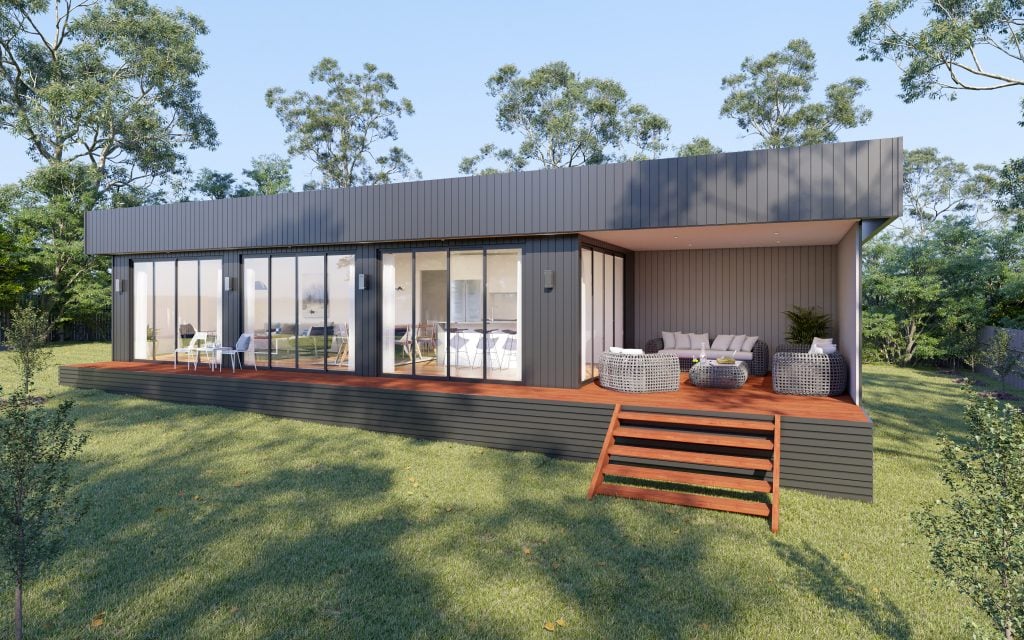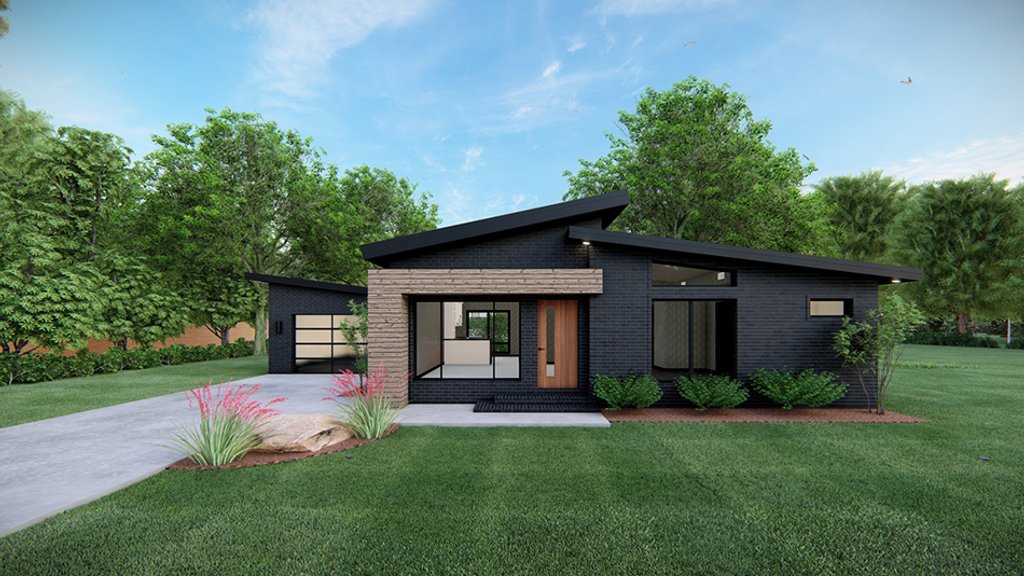Modular Home Design and Features

Modular homes offer a unique blend of affordability, speed, and customization, making them a popular choice for many homeowners. Unlike traditional homes built on-site, modular homes are constructed in a factory setting, offering numerous benefits and design possibilities.
Benefits of Choosing a Modular Home
Modular homes offer several advantages over traditional construction methods, making them an attractive option for various lifestyles and budgets.
- Faster Construction Time: Modular homes are built in a factory setting, allowing for quicker construction times compared to traditional homes. This means you can move into your new home sooner.
- Cost-Effectiveness: Factory production allows for greater efficiency and less waste, often resulting in lower overall costs compared to traditional construction.
- Higher Quality Control: Modular homes are built in a controlled factory environment, ensuring consistent quality and adherence to building codes.
- Customization Options: Modular homes offer a wide range of customization options, allowing you to personalize your home’s design, layout, and finishes.
- Environmental Sustainability: Modular homes often utilize sustainable materials and energy-efficient designs, reducing their environmental impact.
Typical 3-Bedroom, 2-Bathroom Modular Home Layout
A typical 3-bedroom, 2-bathroom modular home layout provides a spacious and functional living space for families or individuals seeking a comfortable home.
- Master Bedroom Suite: The master bedroom typically features a private bathroom, walk-in closet, and ample space for furniture.
- Two Additional Bedrooms: The two additional bedrooms can be configured as guest rooms, children’s rooms, or home offices, offering flexibility based on your needs.
- Two Bathrooms: The home typically includes two full bathrooms, providing convenience for multiple occupants.
- Open-Concept Living Area: The living area, dining room, and kitchen often feature an open-concept design, creating a spacious and inviting atmosphere.
- Laundry Room: A dedicated laundry room is often included, providing a convenient space for washing and drying clothes.
- Garage or Covered Patio: Some layouts may include a garage or covered patio, offering additional space for storage, parking, or outdoor living.
Exterior and Interior Design Styles
Modular homes offer a wide range of exterior and interior design styles to suit diverse tastes and preferences.
- Exterior Styles: From traditional farmhouse designs to modern contemporary aesthetics, modular homes can be customized to reflect your desired style. Common exterior styles include ranch, colonial, craftsman, and contemporary.
- Interior Styles: Interior design options are equally vast, allowing you to create a personalized living space. Popular interior styles include farmhouse, minimalist, industrial, and transitional.
Customization Options for 3-Bedroom, 2-Bathroom Modular Homes, 3 bedroom 2 bath modular home
Modular homes offer a high degree of customization, enabling you to tailor your home to your specific needs and preferences.
- Floor Plans: Choose from various floor plan options to maximize space and create a layout that suits your lifestyle. You can adjust room sizes, add or remove walls, and create unique features like sunrooms or bonus rooms.
- Finishes: Select from a wide range of finishes, including flooring, countertops, cabinets, and paint colors, to personalize your home’s aesthetics.
- Appliances: Choose appliances that meet your specific needs and preferences, such as energy-efficient refrigerators, ovens, dishwashers, and washing machines.
Cost and Budgeting: 3 Bedroom 2 Bath Modular Home

Modular homes are often touted for their cost-effectiveness, but how do they stack up against traditional construction? Let’s delve into the world of modular home budgeting, exploring the factors that influence pricing and highlighting the potential cost savings.
Cost Comparison with Traditional Homes
The average cost of a 3-bedroom, 2-bathroom modular home can vary significantly based on factors like location, size, and customization options. However, a general comparison with traditional construction can shed light on the potential cost savings.
According to the National Association of Home Builders (NAHB), the average cost of a new single-family home in the United States in 2023 was around $475,000. In contrast, a 3-bedroom, 2-bathroom modular home can typically be built for $100 to $200 per square foot, resulting in a total cost ranging from $150,000 to $300,000. This difference can be attributed to several factors, including:
Modular homes are typically built in a factory setting, which allows for greater efficiency and economies of scale.
Traditional construction often involves weather delays and labor shortages, which can drive up costs.
Modular homes often have a shorter construction timeline, leading to lower labor costs.
Factors Influencing Modular Home Cost
Several factors can influence the final cost of a modular home, including:
- Size: Larger homes naturally require more materials and labor, resulting in higher costs. A 3-bedroom, 2-bathroom modular home with a footprint of 1,500 square feet will generally cost more than a similar home with a 1,200 square foot footprint.
- Location: The cost of land, labor, and materials can vary significantly by region. Building a modular home in a high-cost area like California will likely be more expensive than building in a more affordable region like the Midwest.
- Customization Options: Upgrading to higher-end finishes, fixtures, and appliances can significantly increase the cost of a modular home. For example, opting for granite countertops instead of laminate will result in a higher price tag.
Budget Breakdown
Creating a comprehensive budget for a 3-bedroom, 2-bathroom modular home is crucial to ensure a smooth construction process. A typical budget breakdown might include:
- Construction Costs: This is the largest portion of the budget and includes the cost of the modular home itself, as well as foundation construction, site preparation, and installation.
- Land Costs: The cost of land will vary significantly depending on the location. Consider the size of the lot and its proximity to amenities and infrastructure.
- Financing Options: Modular homes can be financed through traditional mortgage loans, construction loans, or specialized modular home financing options. Shop around for the best interest rates and loan terms.
- Other Costs: Additional expenses to factor in include permits, inspections, landscaping, and utility hookups.
Potential Cost Savings
Modular homes can offer several potential cost savings compared to traditional construction:
- Factory Efficiency: Modular homes are built in a controlled factory environment, reducing the risk of weather delays and labor shortages, leading to faster construction times and lower labor costs.
- Material Savings: Modular home manufacturers often have access to bulk materials, which can result in lower material costs compared to traditional construction.
- Reduced Waste: The controlled factory environment minimizes waste generation, leading to further cost savings.
Building Process and Timeline

The construction process of a modular home is a streamlined and efficient approach compared to traditional construction. Modular homes are built in a factory setting, allowing for controlled conditions, precise measurements, and a faster construction schedule. This process involves several steps, from design to delivery and installation.
Steps Involved in Modular Home Construction
The building process of a modular home typically involves the following steps:
- Design and Planning: This stage involves working with a builder or manufacturer to design the home according to your specifications and preferences. This includes choosing the layout, floor plan, exterior design, and desired features.
- Factory Construction: Once the design is finalized, the home’s components, such as walls, floors, ceilings, and roofs, are constructed in a factory setting. This controlled environment allows for precision and quality control.
- Site Preparation: While the home is being built in the factory, the building site is prepared for the delivery and installation of the modules. This involves clearing the land, excavating for the foundation, and pouring the concrete foundation.
- Delivery and Installation: Once the modules are completed, they are transported to the building site and carefully lifted onto the prepared foundation. The modules are then connected to each other and to the foundation using specialized techniques.
- Finishing Touches: After the modules are installed, the final touches are completed, including plumbing, electrical, HVAC, and exterior and interior finishes. This also includes landscaping and any other desired features.
Timeline for a Typical Modular Home Build
The timeline for a modular home build can vary depending on factors such as the size and complexity of the home, the availability of materials, and weather conditions. However, a typical timeline for a 3-bedroom, 2-bathroom modular home build can be estimated as follows:
- Design and Planning: 2-4 weeks
- Factory Construction: 4-8 weeks
- Site Preparation: 2-4 weeks
- Delivery and Installation: 1-2 weeks
- Finishing Touches: 4-6 weeks
Modular Home Construction vs. Traditional Home Construction
Modular home construction offers several advantages over traditional home construction, including:
- Faster Construction Time: Modular homes are built in a factory setting, allowing for a faster construction schedule compared to traditional homes. This is because the modules are built concurrently, and the construction process is not affected by weather conditions.
- Controlled Environment: Factory construction provides a controlled environment that minimizes the impact of weather conditions and allows for better quality control.
- Cost-Effective: Modular homes can be more cost-effective than traditional homes due to the efficient construction process and standardized materials.
- Less Waste: Factory construction minimizes waste generation compared to traditional construction, which often involves on-site cutting and fitting of materials.
Examples of Modular Home Manufacturers
Several reputable modular home manufacturers offer a wide range of designs and features. Some popular examples include:
- Clayton Homes: Clayton Homes is one of the largest modular home manufacturers in the United States, offering a wide selection of floor plans and customization options. Their construction process involves building modules in a factory setting and then transporting them to the building site for installation.
- Cavco Industries: Cavco Industries is another leading modular home manufacturer, offering a range of brands and styles. They emphasize quality construction and energy efficiency in their homes. Their building process is similar to Clayton Homes, with factory construction and on-site installation.
- Champion Homes: Champion Homes is a well-known modular home manufacturer that offers a variety of floor plans and customization options. They focus on providing affordable and quality homes. Their construction process involves building modules in a factory setting and then delivering them to the building site for installation.
Yo, a 3 bedroom 2 bath modular home is like the ultimate chill pad, right? You can totally make it your own with some dope upgrades, like a sick solid wood bathroom vanity 36 inch that’ll give your bathroom that extra touch of class.
With a modular home, you’re basically the boss of your own design, so get creative and make it your own, ya know?
Yo, a 3 bedroom 2 bath modular home is like, the perfect setup for a chill vibe. You know what would really elevate the bathroom game? A midnight blue bathroom vanity. It’s all about that sleek, sophisticated look, ya know?
Plus, a modular home is super customizable, so you can totally make it your own, even with some killer bathroom upgrades.